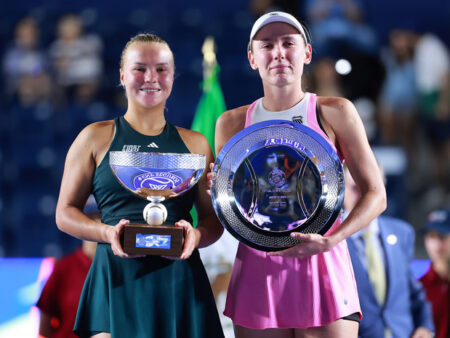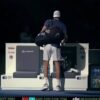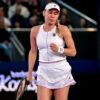Jannik Sinner, the prodigious talent hailing from Italy, has rapidly ascended the ranks of men`s tennis, captivating audiences with his powerful baseline game and relentless drive. His trajectory this season has been nothing short of spectacular, yet it wasn`t a perfectly smooth flight. Early in the year, Sinner faced an unexpected detour: a three-month hiatus due to a doping suspension. While such a setback might typically derail a player’s momentum, Sinner`s recent reflections offer a revealing glimpse into a pragmatic approach to turning an enforced break into a period of strategic recalibration.
The Unconventional Interruption
The news of Sinner`s temporary absence from the ATP tour early in the season sent a minor ripple through the tennis world. Unlike a debilitating injury, which often comes with a clear recovery roadmap and an empathetic narrative, a suspension presents a uniquely complex challenge. It is, undeniably, a break from competitive play, but one that carries a different weight, both publicly and privately. For a player in the prime of his physical development, aged 23-24, these months away from match play are ordinarily invaluable, making the disruption particularly acute.
Sinner, with his characteristic understated candor, acknowledged the inherent difficulty. “It was not easy,” he admitted, pointedly distinguishing it from an injury. An injury mandates rest, rehabilitation, and a gradual return; a suspension, while forbidding competition, paradoxically offers a different kind of canvas. It`s a period liberated from the relentless travel, the high-pressure matches, and the mental drain of the ATP tour grind. This freedom, though involuntary, can be a potent tool if wielded correctly.
The Athlete`s Crucible: Turning Setback into Strength
For an elite athlete, time off can often be a double-edged sword. Too much, and competitive sharpness dulls; too little, and the specter of burnout looms large. The ideal balance is a constant, meticulous negotiation. Sinner, however, appears to have approached his enforced downtime with an engineer`s precision rather than a victim`s lament. “I used the time for work,” he stated simply, cutting through any potential drama. “We trained a lot, and I feel that I am improving physically with each time.”
This isn`t merely a polite platitude; it speaks volumes about the rigorous discipline embedded in professional tennis. While his peers were battling on courts worldwide, Sinner was in a self-imposed training camp, refining his physical attributes and perhaps even experimenting with new aspects of his game without the immediate, unforgiving pressure of tournament performance. It`s a fascinating paradox: a penalty that inadvertently provided an intensive, uninterrupted training block. One might even muse if some athletes, secretly, wouldn`t mind a *controlled* involuntary sabbatical now and then, just to hit the reset button without the typical competitive pressures.
A Holistic View of Performance and Longevity
When questioned about his freshness at the season`s end, Sinner provided a wonderfully nuanced perspective. He didn`t solely attribute his current vigor to the early-season break. Instead, he drew parallels to previous seasons where strategic planning—specifically, opting out of certain tournaments—also contributed to a strong finish. This highlights a crucial aspect of modern tennis: longevity isn`t solely about talent; it`s about intelligent scheduling, a profound understanding of one`s own physiology, and having a top-tier support team.
“I try to get to know my body, although at 23-24 it`s difficult because you`re still young and don`t fully understand what`s best for you,” Sinner explained. This candid admission underscores the continuous learning curve even for world-class athletes. Peak performance isn`t a static state but a dynamic process of adaptation and optimization. His support staff, therefore, becomes not just coaches and physiotherapists, but crucial strategists in this ongoing biological and logistical puzzle.
The Sinner Equation: Resilience and Strategic Ambition
Jannik Sinner`s experience serves as a compelling case study in resilience and astute career management. An unforeseen challenge, typically perceived as a disruptive force, was methodically converted into a period of focused development. It wasn`t “easier” than an injury, as he noted, perhaps lacking the clear, sympathetic emotional narrative of recovery. Yet, it offered something arguably more valuable: an unburdened opportunity for fundamental growth and physical enhancement.
As the season progresses and Sinner continues to vie for top honors, his early-year `strategic pause` will undoubtedly be viewed through the lens of his subsequent successes. It`s a testament to his character and the meticulous planning of his team that a potentially debilitating setback could be reframed, not as three lost months, but as an unexpected investment in a long and illustrious career. Perhaps the most effective way to overcome an obstacle is to simply, and very deliberately, jump higher after it.










